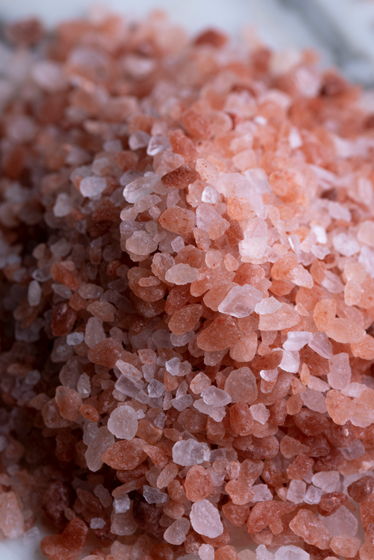WHO announces guidelines recommending a switch to 'reduced salt', but why is the switch necessary?

On January 27, 2025,
Use of lower-sodium salt substitutes: WHO guideline
https://www.who.int/publications/i/item/9789240105591
Launch of the WHO guideline on the use of lower-sodium salt substitutes
https://www.who.int/news-room/events/detail/2025/01/27/default-calendar/launch-of-the-who-guideline-on-the-use-of-lower-sodium-salt-substitutes
Why the WHO has recommended switching to a healthier salt alternative
https://theconversation.com/why-the-who-has-recommended-switching-to-a-healthier-salt-alternative-248436
The advice to 'limit salt (sodium chloride) intake' is not new. Excessive salt intake has been confirmed to increase the risk of high blood pressure, with approximately one in three adults in Australia estimated to have high blood pressure. High blood pressure is known to increase the risk of heart disease, stroke and kidney disease, and the WHO estimates that excessive salt intake is responsible for 1.9 million deaths worldwide each year.
In fact, research has shown that reducing your daily salt intake by just 1g can reduce the risk of stroke and heart attack, and that frequently adding salt to your food can shorten your lifespan.
Research has also shown that replacing salt with low-salt salt can help reduce the incidence of stroke and other illnesses.
Research results show that replacing salt with 'low-sodium salt' reduces the incidence of strokes and other conditions - GIGAZINE

The WHO's newly published salt reduction guidelines recommend limiting daily sodium intake to 2g or less. However, at the time of writing, the average daily sodium intake for adults was about 4.3g, so this means that it must be reduced to less than half that amount.
At the 66th World Health Assembly held in 2013, WHO member states agreed to reduce salt intake by 30% by 2025. However, it has become clear that reducing salt intake is extremely difficult, and most countries have not been able to achieve the goal of 'reducing salt intake by 30%.' Therefore, when announcing the new guidelines, WHO has set the same goal of 'reducing salt intake by 30% by 2030.'
Nutrition expert Luna Sue and medical expert Bruce Neale pointed out: 'The problem is that reducing salt intake - which means embracing the taste of less salt - will mean changing the way we cook. This is a big ask of everyday cooks, and a big ask of the food industry too.'

That's why reduced-salt salt is gaining attention. In particular, reduced-salt salt called 'potassium-fortified salt' has attracted attention, which is salt in which some of the sodium chloride has been replaced with potassium chloride. Potassium is an essential mineral that plays an important role in all bodily functions. Fresh fruits and vegetables contain a lot of potassium, which is one of the main reasons why vegetables are considered to be 'healthy foods.' Currently, people consume more sodium than they need, but many people do not consume enough potassium, so from this point of view, potassium-fortified salt seems to be a promising alternative salt.
The WHO recommends a daily potassium intake of 3.5g, but many people
Large-scale studies conducted around the world have demonstrated that switching from regular salt to potassium-fortified salt reduces the risk of heart disease, stroke, and premature death. Other studies have shown that switching from regular salt to potassium-fortified salt could prevent hundreds of thousands of deaths from cardiovascular disease (such as heart attacks and strokes) annually in China and India alone.

An important advantage of switching to an alternative salt rather than reducing salt use is that potassium-fortified salt is simply substituted for regular salt. Most people do not notice a significant difference in taste when using potassium-fortified salt instead of regular salt. In fact, a large-scale study of replacing salt with potassium-fortified salt found that more than 90% of subjects still used potassium-fortified salt five years after switching from salt to potassium-fortified salt.
However, potassium-fortified salts do have risks - for example, they are not recommended for people with advanced kidney disease, who cannot process potassium well, and so potassium-fortified salts should carry appropriate warning labels, they warned.
In addition, potassium-fortified salt is more expensive than regular salt. Because potassium-fortified salt is more expensive to produce than regular salt, it is mainly sold at a premium price as a niche health food. According to a survey published in 2021, reduced-salt salt is only sold in 47 countries around the world, most of which are high-income countries.
However, reduced-salt salt is also sold in Japan. For example, Ajinomoto's 'Yasashio' is a potassium-fortified salt in which some of the sodium has been replaced with potassium.
Amazon.co.jp: Ajinomoto Yasashio 180g [reduced salt]: Food, Beverages & Alcohol
https://www.amazon.co.jp/exec/obidos/ASIN/B000V6CR54/gigazine-22

There are also other salts such as 'Uresio', which is a low-salt salt that does not contain potassium chloride and has 50% less sodium than regular table salt. Uresio is a low-salt salt that enhances the saltiness with the acidity of lemon.
Amazon | Pokka Sapporo Foods Lemon's Thanks Ureshio 100g x 3 | Pokka Sapporo Foods | Spices and Herbs Online

Related Posts:






